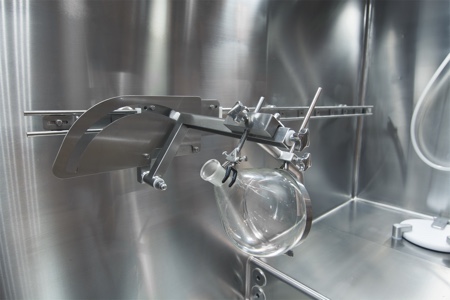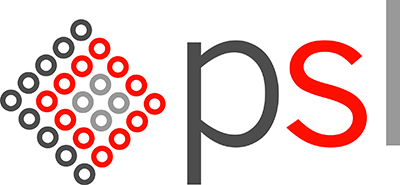High containment glovebox and isolator manufacturers face new challenges as the High Potency Active Pharmaceutical Ingredient (HPAPI) market is projected to double by 2023 according to Transparency Market Research’s latest report. Targeted therapeutics using HPAPIs and cytotoxic drugs show effective treatment at low concentration in major therapeutic areas from oncology, cardiovascular, anti-diabetic to antibody-drug conjugates (ADCs) and have become the focus of researchers and manufacturers worldwide.
These compounds present serious occupational hazards, if not handled safely because of their highly toxic nature, and create significant risks of cross-contamination with other products. Patients and operators’ health as well as the environment have to be protected from these hazards. As the market is growing, new containment strategies are needed in manufacturing plants to address these risks and strengthen safety requirements. A special focus is also required for R&D and development work on these drugs as their toxicity levels are often unknown during these early stages.
The use of high containment systems, mainly rigid gloveboxes or isolators working under negative pressure, has been widely adopted in the industry but as the potency level of new drugs being developed is increasing, the containment levels set by professional bodies and industrial hygienists are reaching the lowest ever levels for acceptable exposure – nanogram occupational exposure levels (OELs). Such rigorous protection levels require a review of traditional containment strategies.
Traditionally, containment technologies are installed at critical points of the process where the most dust exposure from a large quantity of powder is expected, i.e. dispensing and subdividing, charging raw materials into reactors, offloading vessels, drum filling, etc. Containment system providers have developed and refined solutions to enclose potent powder and protect operators and the environment throughout the industrial scale production process.
But when it comes to small quantities of toxic products, the containment strategy needs stricter requirements. Fitting a glovebox to charge a 20L reactor vessel or harvesting a filter and transfer a wet cake of a few kilograms to a tray dryer is not viable. Glassware is widely used at small scale impacting the transfer method and increasing the risk of breakage and ultimately exposure to toxic compounds.
Enclosing the entire kilolab production line in a single large high containment isolator is one strategy being adopted in manufacturing plants. Entire R&D and clinical trial batches are being produced by being completely contained into an isolator (Fig. 1). Such an approach provides physical protection and containment of fragile glassware while guaranteeing a high level of operator protection from toxic liquids, dust, vapour and solvent. The targeted OEL will depend on the required operations and quantities but for typical applications of less than 1kg the enclosed installation can achieve OELs down to the nanogram levels of 20ng or less/m3, 8hrs time weighted average (TWA).
Enclosing the production line allows operator intervention in a safe manner onto the glassware or reaction rigs. Manual handling is necessary when developing new products or producing contract batches as the operator needs to adjust and modify the installation to meet the process needs, i.e. changes of fittings, valves, etc.
Most kilolab synthesis processes are flowing in a closed system within reaction rigs and the product is transferred through pipework and tubing. High containment isolators provide an additional protection layer in case the closed process is unsealed to adjust fittings but also to allow for fast and easy access without having to wear heavy personal protective equipment (PPE).
During HPAPI and cytotoxic drug manufacture, the critical points are the open solid handling steps, generally upstream of the production line and at the end with the final or intermediate dried product. All these steps require extreme containment because of volatile dust in the air during sub-dividing and charging or raw materials, or offloading of the final powder. Even when handling small product quantities, there is a high risk of exposure and, more importantly, of cross-contamination when transferring the product from one step to another. Providing a unique isolator for the entire process reduces this risk greatly (Fig. 2). Products are never in contact with the external environment during the process, eliminating risk of cross-contamination.
Working via an isolator does not require the operator to be fully suited in PPE – one of the key advantages of using the technology. The kilolab isolator suite is installed in a controlled environment such as a cleanroom and replaces the traditional fume hoods where reactor rigs are installed. The cleanroom does not require complex design to accommodate several rigs as all glassware is enclosed in the isolator chamber. Capital expenditure will therefore be reduced by adopting high containment systems.
Ergonomics and cleaning
Integrating the whole production line in a high containment isolator requires in depth process understanding to achieve strict containment performances as well as project management and communication with the various suppliers involved. The isolator manufacturer needs to understand how the operator will use the different process equipment to design a suitable solution. The integration relies on glassware skids to provide a robust configuration that is as versatile as possible for multi-product and contract manufacturing.
The containment solution designer should undertake a detailed technical review with the end users to clearly outline the proposed operation to understand how the equipment will be used and under what conditions. This allows bespoke solutions to be developed that meet user requirements, technical regulations and equipment manufacture. The product quantities, handling instruction, access points, utilities connections and cleaning methods are examples of process aspects to be known and fully controlled.
Glassware is one of the fiddliest apparatus to integrate, the turnkey provider needs to pay great attention to the ergonomics. The best way to address these requirements is to work with the operators and glassware suppliers at the beginning of the project to review a full scale mock-up.
Typically the containment provider will build an exact model of the isolator in a robust but flexible material and will include all the glassware. The mock-up should allow for flexibility to change the glove port position of the window enabling a ‘try and test’ study resulting in the best ergonomic solution for the process handling. The positioning of the glove ports is a key ergonomic consideration. The window, usually glass, is the main physical barrier between the operator and the process. Through this rigid barrier the operator needs to perform all the necessary intervention with ease of access to avoid breakage or product spillage. For optimal ergonomics and visibility, full length windows on both sides of the isolator are recommended.
The ergonomic features drive the design as much as the process flow. The isolator needs to be modular and provide handling assistance such as sliding rails, strategically placed connections plate, mounting frame, etc. (Fig. 3).

Fig. 3: The inside of an isolator showing sliding rails for better ergonomics
Ergonomics have a considerable impact on the cleanability of the isolator; automated clean-in-place systems, such as spray balls, are not appropriate in large isolators. They generate large quantities of liquid waste and cannot guarantee 100% coverage with reaction skids obstructing the spray flow. It is recommended to carry out manual wiping first to eliminate any solid residues and then rinse down locally using integrated wash hoses and spray guns.
This brings us back to the ergonomics and being able to reach all critical areas of the isolator for clean down through the restraint and protection of the gloves. Special features are necessary when it comes to cleaning glassware, such as additional sinks and washing chambers for handling and cleaning glassware manually. Glassware is fragile and potential broken glass waste needs to be considered.
Manufacturing plants may require decontamination capabilities not only with water or detergent but will also require solvent inlets to address this requirement, linking back to the process understanding.
When scaling up to pilot plant production such an approach is not realistic as it will require a large piece of equipment to be fully integrated as one production line. However, similar containment strategies have been seen in cytotoxic manufacturing plants where process equipment is completely enclosed in high containment isolators, large enough to integrate several other process steps but not an entire production line.
The development of HPAPIs and cytotoxic drugs, including ADCs is a challenging task and the technology for their cost effective, safe and high quality manufacture should be carefully considered and assessed. Regulatory and standardised process policy should be implemented to control this fast growing market and provide best manufacturing practices based on field data. Cleaning validation is raising concerns in the industry and the use of disposable flexible containment solutions on their own would be detrimental to operator safety.





